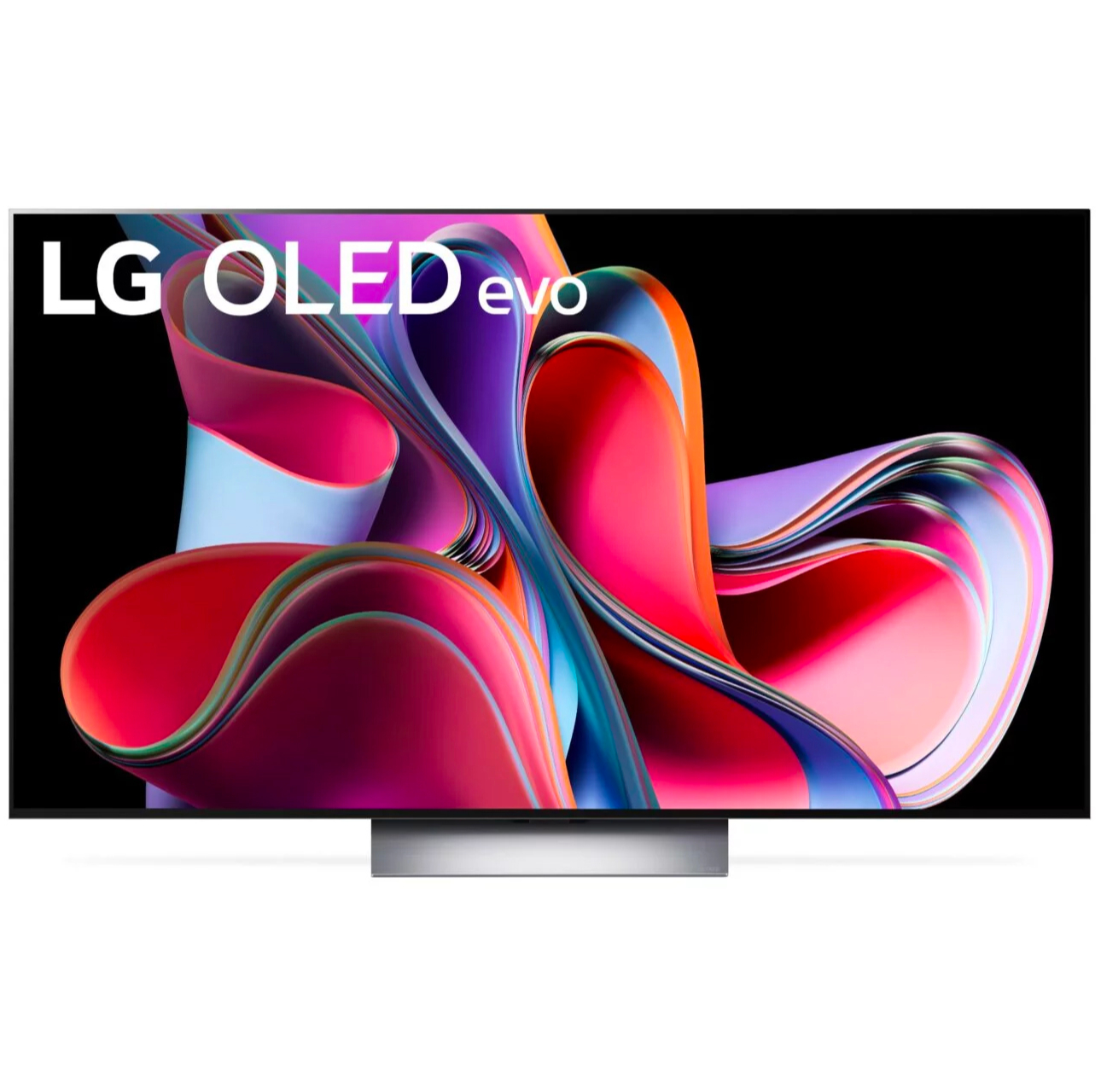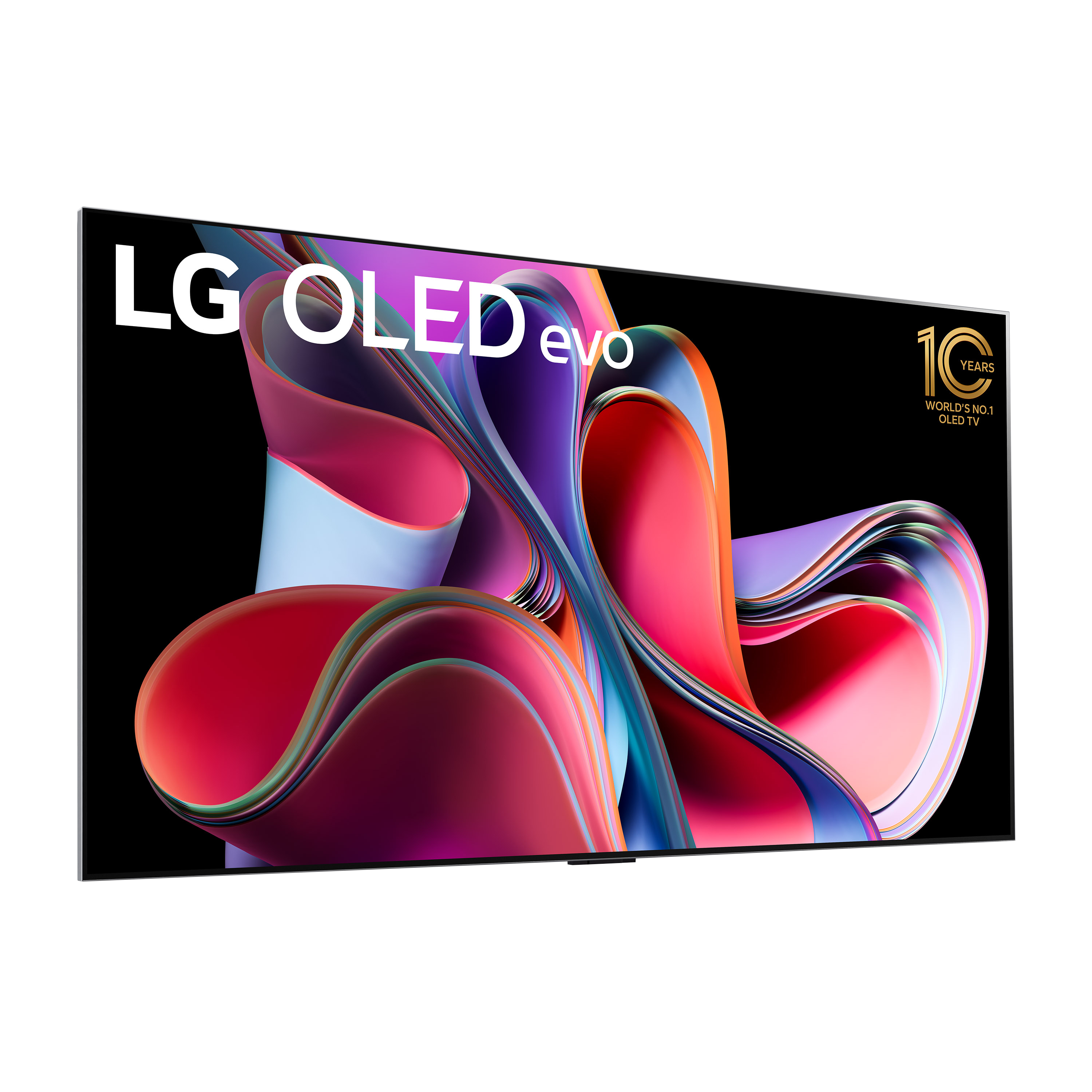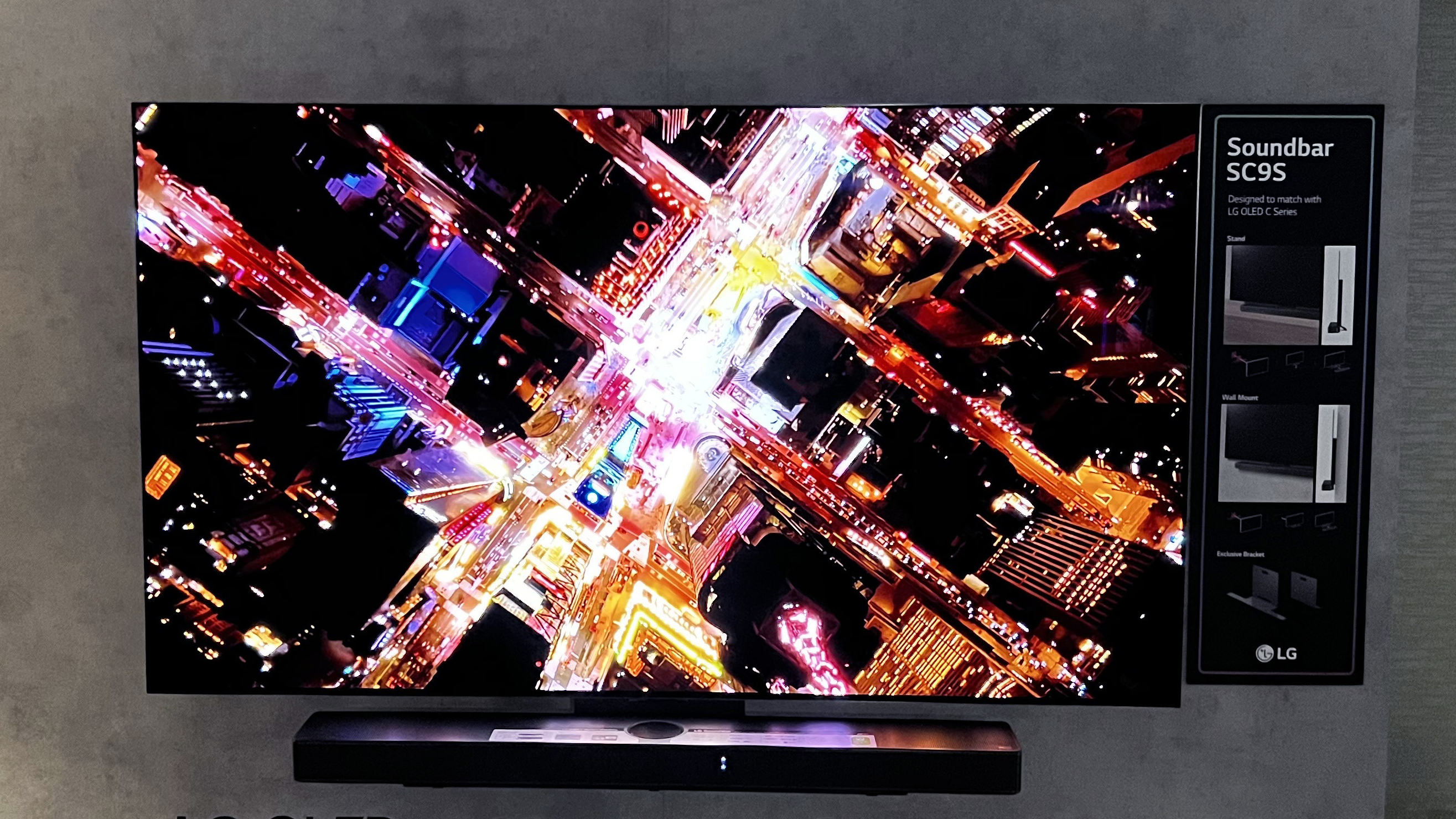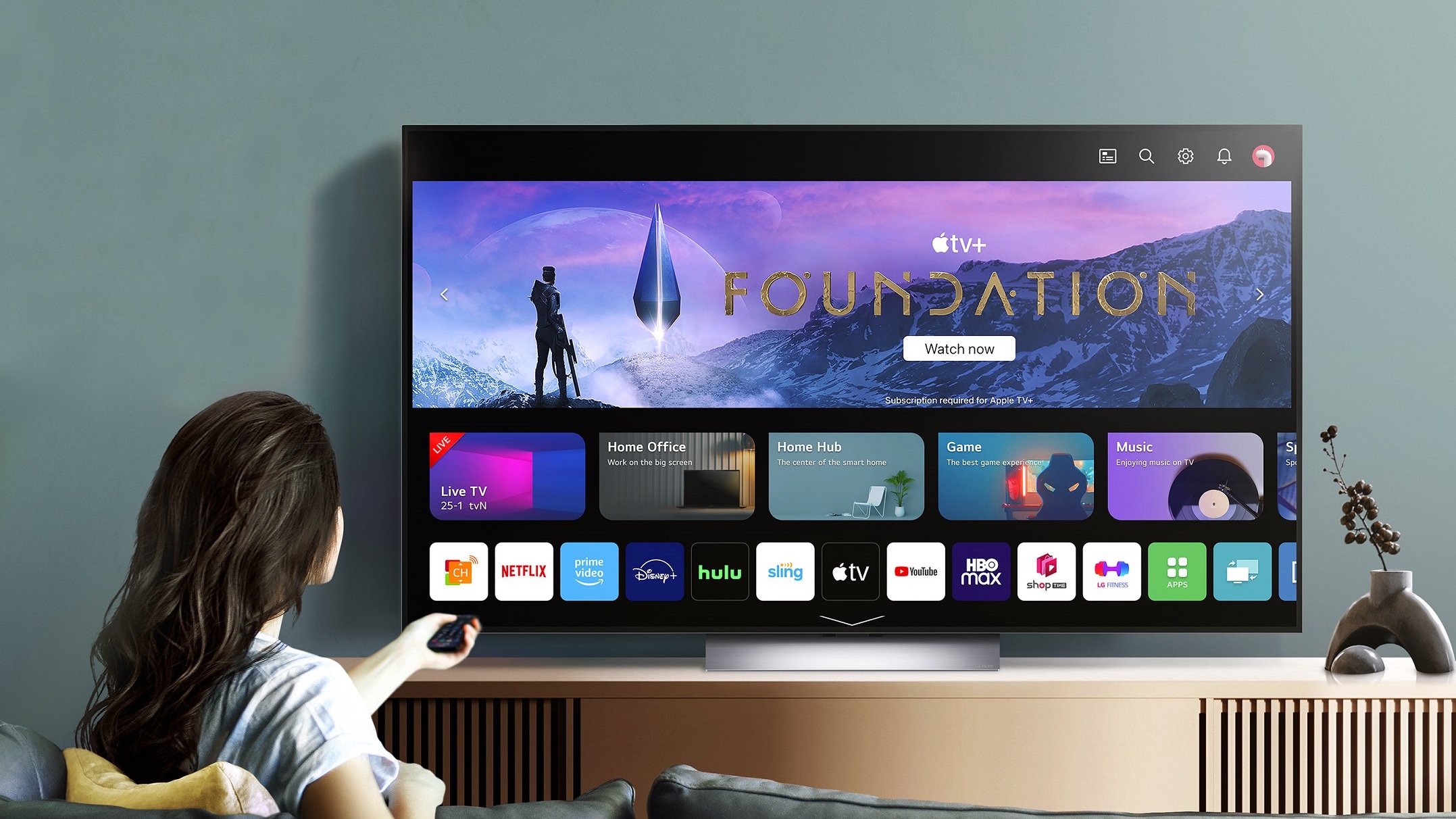LG C3 vs LG G3: the difference between these OLED TVs explained
Is the LG G3 OLED TV worth the price bump over the C3?

Sizes: 42, 48, 55, 65, 77, 83 inches
Screen tech: OLED Evo
Processor: Alpha a9 Gen 6
HDMI: 4x HDMI 2.1
HDR: Dolby Vision, HDR10, HLG
This is set to be a great mid-range TV this year, sitting between the B3 and the G3 in LG's line-up. It features LG's latest and greatest image processor, which should boost contrast and color realism in scenes. A new media switching feature is added into the mix too – but the changes from last year's LG C2 are very small, including the brightness and reflectivity.
Pros
- New image processor
- More sizes available
- More affordable
Cons
- No brightness change from last year's C2
- Much less bright than G3

Sizes: 55, 65, 77, 83 inches (97 inches in UK and Europe)
Screen tech: OLED Evo with Light Control Architecture
Processor: Alpha a9 Gen 6 chip
HDMI: 4x HDMI 2.1
HDR: Dolby Vision, HDR10, HLG
The LG G3 is at the premium (and therefore more expensive) end of LG's 2023 line-up. Its new Light Control Architecture tech means it's the brightest OLED yet, massively beating the C3 in this area. It has a thin design with a slim bezel and it's made to be wall-mounted. A few small upgrades boost audio performance.
Pros
- Huge brightness upgrade
- New image processor
- Beautiful design
Cons
- More expensive
- Doesn't come with stand
- Fewer sizes
2023’s upcoming LG C3 OLED and LG G3 OLED models are destined to be two of the best OLED TVs of the year.
Replacing the the LG C2 OLED and LG G2 OLED ranges of 2022, each will offer stronger performance than its predecessor… but one has made a bigger jump than the other, for sure.
At a glance, the C3 and G3 mainly differ when it comes to sizes and brightness. The latter starts at 55 inches and above, also offering LG’s latest-gen Brightness Booster Max and Light Control Architecture technology, which are set to make it the brightest OLED TV so far when it launches.The C3 delivers significantly less bright HDR performance, but caters to people with less space thanks to a broader size of screens – and, perhaps most importantly, will be the cheaper of the two.
To help you figure out the best LG OLED TV for 2023, we’ve rounded up everything we currently know about each panel – covering price, size and performance differences – to help you decide which to go for when they launch in March 2023.

LG C3 OLED vs LG G3 OLED: Price, sizes and availability
The most decisive differences between the LG C3 and G3 will be their prices and sizes, for most people. The G3 is the more expensive model, while the C3 comes in a wider range of options as well as being cheaper at the same sizes.
At the time of publishing, we don't have official prices for these sets yet, but we expect them to be right in line with the LG C2's and LG G2's launch prices from last year, so here are those prices at various sizes as a guide for what's likely.
| Size | LG C2 price | LG G2 price |
|---|---|---|
| 42-inch | $1,399 / £1,399 (around AU$2,000) | N/A |
| 48-inch | $1,499 / £1,399 (around AU$2,200) | N/A |
| 55-inch | $1,799 / £1,999 (around AU$2,600) | $2,199 / £2,399 (around AU$3,200) |
| 65-inch | $2,499 / £2,799 (around AU$3,600) | $3,199 / £3,299 (around AU$4,700) |
| 77-inch | $3,499 / £3,699 (around AU$5,100) | $4,199 / £4,499 (around AU$6,100) |
| 83-inch | $5,499 / £4,799 (around AU$8,000) | $6,499 / £6,499 (around AU$9,300 |
| 97-inch | N/A | $24,999 / £24,999 / (around AU$43,000) |
A glance at the above should quickly tell you which of the C3 and G3 TVs is for you if you have specific size needs. Those looking for a cutting-edge monitor that will fit in a smaller room, such as a bedroom or office, will find the C3's 42- and 48-inch models are ideal. If you’ve got a colossal wall and money is no object, the brighter and thinner G3 is the TV your home theater has been craving.
Sign up for breaking news, reviews, opinion, top tech deals, and more.
Both the C3 and G3 are expected to launch in March 2023.

LG C3 OLED vs LG G3 OLED: Features
The C3 and G3 will be the most feature-packed TVs the company has ever produced. Both use LG’s Alpha a9 Gen6 chip, which promises to add even more realism to the handling of contrast and colors. Really, the difference is likely to be minimal in day-to-day use, but those who crave the absolute best will be comforted to know that both pack in LG’s most advanced processing tech yet.
The big image quality difference between the C3 and G3 is the OLED panel used. While the C3 continues to use the OLEV Evo technology seen in last year’s C2 range, the G3 sports a new-gen version with what LG is calling Light Control Architecture and light-boosting algorithms. These are also known as Micro Lens Array and META tech, and can potentially increase peak HDR brightness to 2,100 nits – though we expect real-world results to be more like 1,300-1,400. For comparison, the LG C2 (and we don't expect the C3 to change much) reaches around 800 nits.
So while we'll need to wait to confirm things, in simple terms it looks like we're talking about a 60% increase in brightness from one model to the other, and that has a big effect on how brilliant white tones look, and how dramatic and realistic the contrast is overall.
There is another difference, though, which is that the LG G3 has a more advanced anti-reflection layer. This will mean that its pictures are less washed out by reflections when it's light, which means it basically gets a double-boost to its brightness, because what it's capable of can punch through more easily in bright rooms. We saw the same kind of screen in a different TV, and the difference is massive.

But what about other features? Well, both sets offer support for Dolby Vision IQ and Dolby Atmos, and with four 4K 120Hz HDMI 2.1 ports, sub-10ms input lag, G-Sync and VRR support for PC gamers, and dedicated Game Optimizer settings to squeeze every last piece of performance out of the latest PS5 and Xbox Series X titles, LG’s 2023 panels are the ultimate gaming displays.
One of said ports on these TVs also supports eARC for convenient connections with one of the best soundbars. Speaking of which, they also both support LG's new Wow Synergy feature, which means if you by a compatible LG soundbar (which includes affordable models, as well as the mighty LG S95QR after an update)
Quick Media Switching VRR is also a feature both TVs support. It may not exactly roll off the tongue, but this new technology should ensure you’re no longer subjected to black screens while switching between HDMI 2.1 ports, and enables compatible streaming boxes (such as the Apple TV 4K 2022) to switch between different frame rates for movies and TV shows without any interruption.
The C3 and G3 OLEDs promise sleeker smart TV software, that offers more customization-friendly user profiles. When you turn on either panel for the first time, the TV can also guide you through various custom picture presets, giving you a quick ‘eyeball test’ via different images to allow you to pick your favorite setting with minimal fuss. It's also faster to find what you like to watch in different streaming services, and to access useful menu options.

LG C3 OLED vs LG G3 OLED: Design
Design-wise, the big difference is about whether you want to wall-mount the TV or not. Both can be wall-mounted, but the G3 is really designed for it, with a super-thin design that comes with a special mounting bracket that enables it to sit totally flush to the wall, if you want. It does not, however, come with any kind of stand. At all. You can buy feet or a floorstand separately.
While the G3 is meant for wall hanging, the C3 comes bundled with a stand, making it far more convenient for the majority of TV buyers. The inclusion of both 42 and 48-inch models means the C3 is far more compatible for those looking for something for a small room, but a switch to carbon fiber in the body in larger sizes means it's a little lighter than the average TV too.

LG C3 OLED vs LG G3 OLED: Conclusion
It's pretty simple: if you want the best image quality, the LG G3 looks set to be genuinely ground-breaking, something we were able to confirm during a recent comparative demo of top OLED TVs put on by LG. Aside from the new processor, the screen with much lower reflectivity and much higher brightness will look a lot more vibrant and realistic. It will be a major step up, based on our experience with the new screens so far – but we'll need to wait for our full reviews to be absolutely sure.
However, the C3 has more sizes, and is a lot more affordable most importantly – while still maintaining all the same features as the G3 outside of the screen itself. So it will come down to the size you need, the budget you have… and whether you can be tempted by what looks to be LG's best-ever image quality.
Dave is a freelancer who's been writing about tech and video games since 2006, with bylines across GamesRadar+, Total Film, PC Gamer, and Edge. He's been obsessed with all manner of AV equipment ever since his parents first bought him a hideously garish 13-inch CRT TV (complete with built-in VCR, no less) back in 1998. Over the years he’s owned more plasma and OLED TVs than he can count. On an average day, he spends 30% of his waking existence having mild panic attacks about vertical banding and dead pixels.
